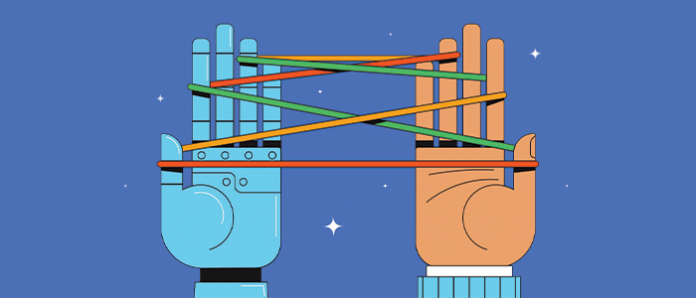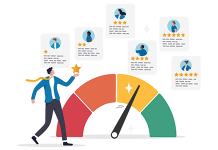Here’s a frustration many sales leaders know well: you send your team through another round of training, and two weeks later, they’re back to their old habits. The gap between learning and performance isn’t new, but expensive.
Knowledge alone isn’t enough. Sellers must be fluent in leading the conversations that create value for buyers.
AI-enabled selling makes that possible by helping teams practice, refine, and execute at a higher level.
What makes AI different from past training innovations is its ability to pair human expertise with scalable tools for practice, coaching, planning and measurement. It’s not a substitute for skill; it’s an accelerant. According to Salesforce research,
83% of teams using AI reported revenue growth, compared to 66% of those not using it. But that stat doesn’t tell the full story.
Winning teams aren’t just buying tools and hoping for magic. They’re deliberately building new capabilities.
AI is already reshaping sales roles. What it hasn’t changed is the need for sellers who can lead complex conversations and deliver buyer value.
The Evolution Toward AI-Augmented Performance
Sales has evolved — from Rolodexes to CRMs to insight platforms — with each wave expanding what’s possible. AI represents the next leap, not because it does the selling, but because it amplifies the strengths of skilled professionals. Those who know how to uncover needs, shape conversations and guide buyers toward value now have more time to do what matters most.
As routine tasks shift into AI-augmented workflows, sellers can focus more on discovery, influence and relationship-building, key differentiators in complex deals.
This shift is already underway, and it’s showing up in four core AI capabilities that elevate seller performance.
Four AI Capabilities Transforming Performance
For sales leaders, these are the high-leverage areas to prioritize:
- Simulation-Based Skill Development – Classroom training builds concepts. AI simulations build fluency. Sellers can now rehearse objection handling, executive briefings and pricing conversations with realistic buyer personas and receive instant feedback. This builds fluency in articulating and delivering value in high-stakes conversations. Repetitions increase, execution risk drops, and proficiency rises faster than with workshops alone.
- Scalable Coaching Intelligence – Frontline managers are stretched thin. They’re carrying quota, running meetings, fighting fires in deals, and somehow still expected to provide thoughtful, individualized coaching for every rep. AI helps by standardizing reviews across calls and role-plays, identifying patterns, and highlighting the few behaviors that drive outsized results. That way, managers can focus their limited time where it counts most.
- Accelerated Message Development – AI helps teams explore variations of talk tracks by buyer role or industry, enabling faster iteration without sacrificing authenticity. Sellers keep their voice and their judgment while reducing the time to messaging that resonates.
- Performance Measurement That Drives Results – Skill development becomes visible and trackable. Teams monitor trends, measure coaching impact, and link practice to pipeline and revenue. These capabilities are already showing up in operating metrics and hiring patterns.
Market Evidence: Augmentation, Not Elimination
The narrative around AI displacing sellers doesn’t match how top-performing organizations are operating. Salesforce research found that teams using AI are more likely to expand headcount than those that aren’t.
Across sales, account management, customer success and revenue operations, leaders continue to invest in people because they need professionals who can translate capability into buyer outcomes and lasting value.
That said, I’m seeing companies rush to “AI-enable” their sales orgs without fixing fundamental problems first. If your messaging is unclear, your ideal customer profile is fuzzy, or your managers don’t know how to coach, AI won’t help. It will just make you fail faster — and at scale. Build strong foundations, then multiply them with technology.
An Action Plan for Sales Leaders
So how do you operationalize this?
- Seller-Driven Development
Give sellers on-demand AI simulations that mirror real challenges, including pricing objections, executive conversations, competitive traps, etc. When sellers come to coaching sessions with specific asks like “I keep losing momentum when procurement gets involved. Can we work on this?” you know development has shifted from a push to a pull.
- The Manager’s Role in the AI Era
Most managers were promoted for their ability to close deals, not to coach others. AI insights help pinpoint where coaching has the biggest impact, especially in developing consultative, value-based skills that buyers reward. Managers move from tracking activity to guiding strategy.
- Strategic Coaching Conversations
Use AI insights to identify behavior patterns and turn coaching into higher-level conversations about strategy, reinforcement and advanced tactics. Let sellers handle practice independently, and reserve manager time for meaningful performance gains.
- Systematic Development Rhythms
Build practice and measurement into regular cadences: weekly self-directed reps, monthly development check-ins, and quarterly team calibrations. This reinforces continuous improvement and compounds skill over time.
The Competitive Advantage Ahead
Whether AI eventually replaces sellers or simply makes the best ones better remains to be seen. But teams that treat AI as a performance multiplier are already outperforming competitors who don’t.
That gap is real. It’s measurable, and it’s widening.
You can debate the long-term future, or you can start building the capabilities that drive advantage now. Only one of those choices moves the business forward.





